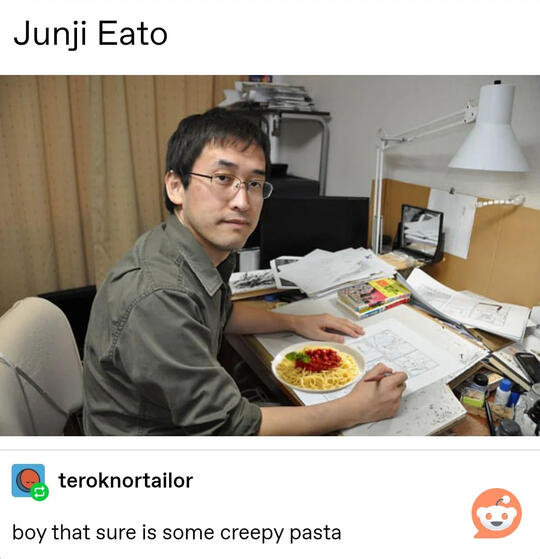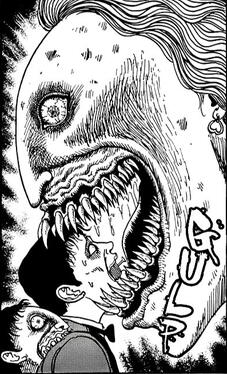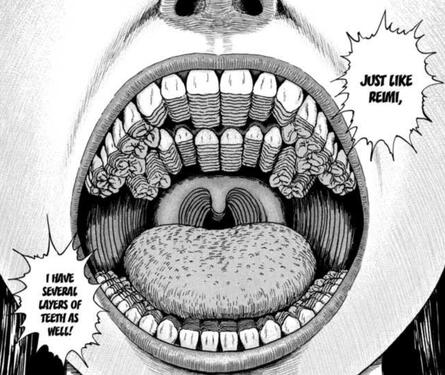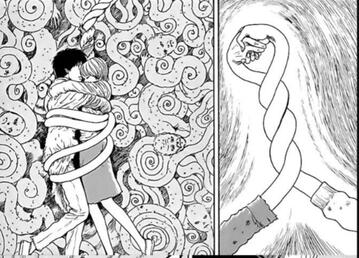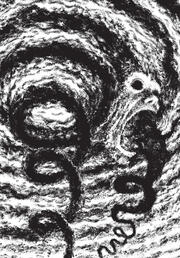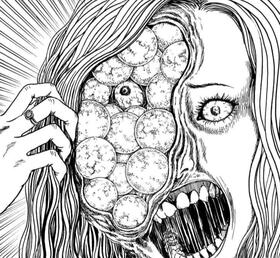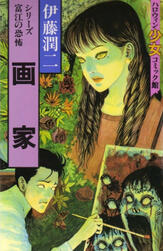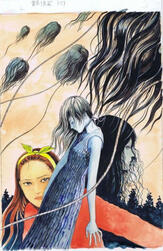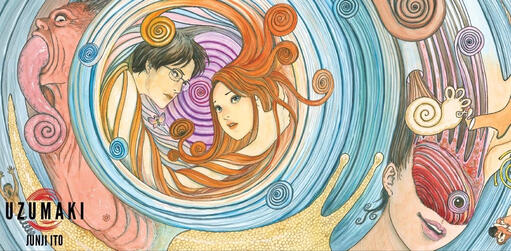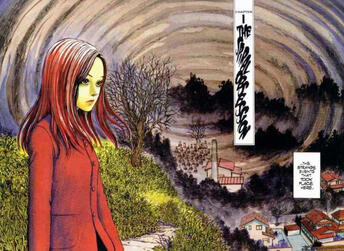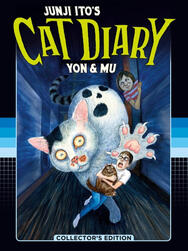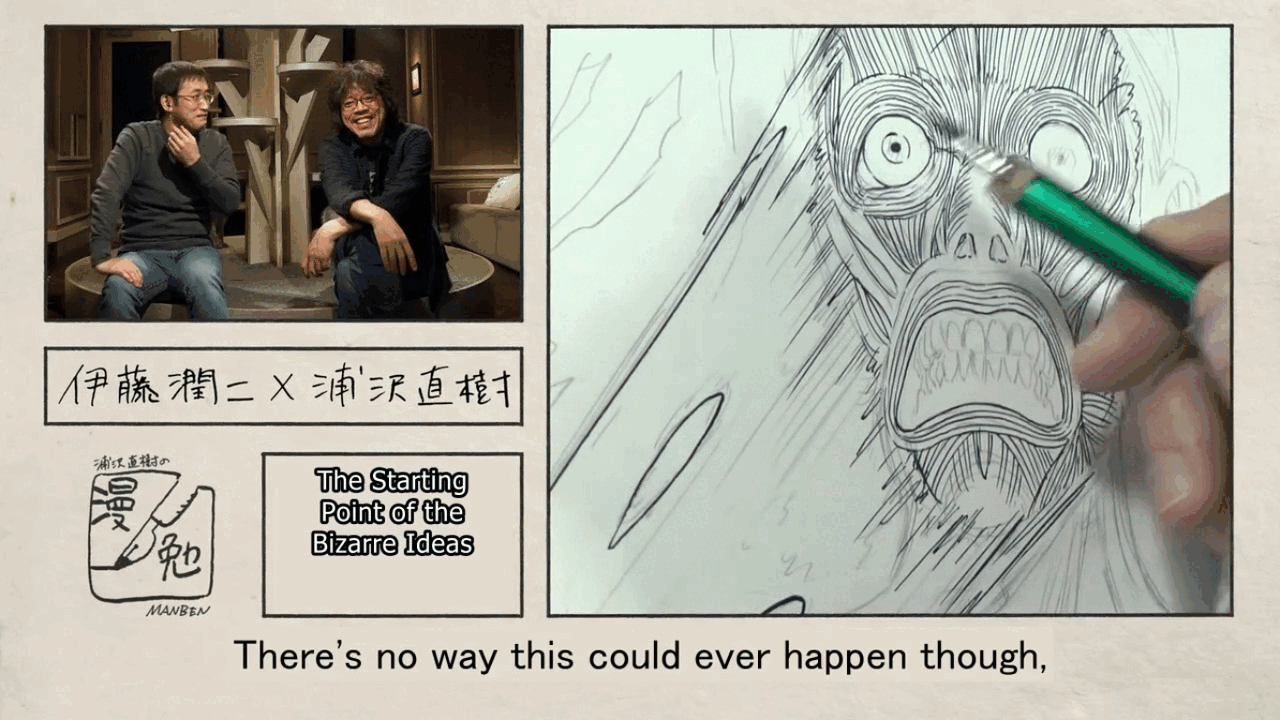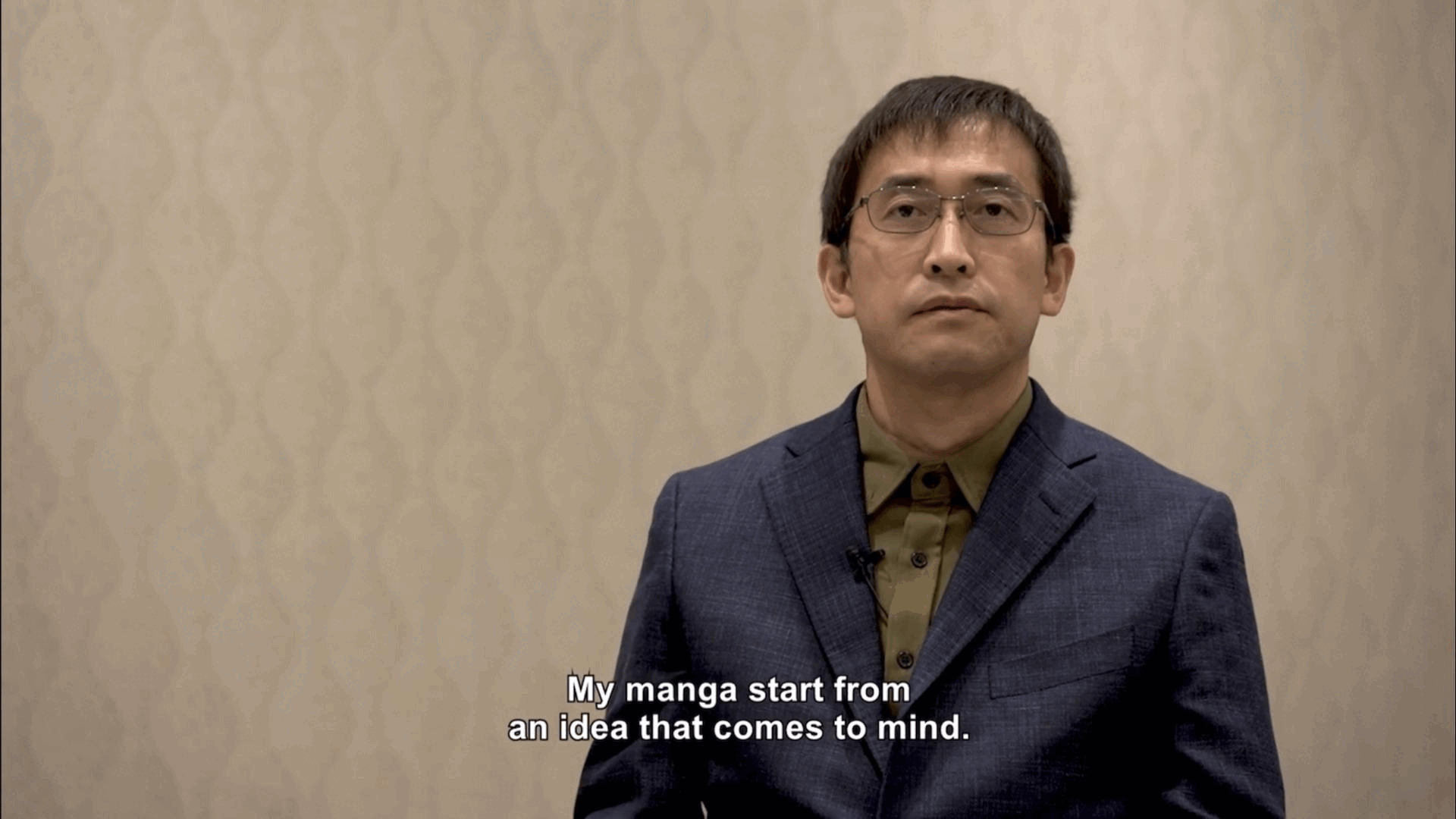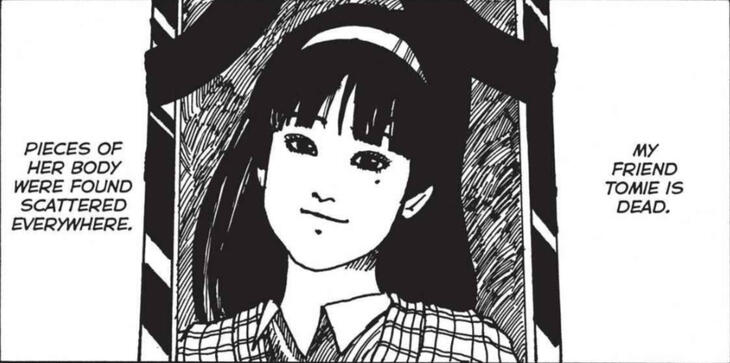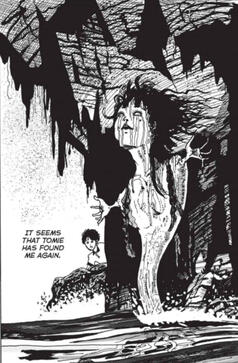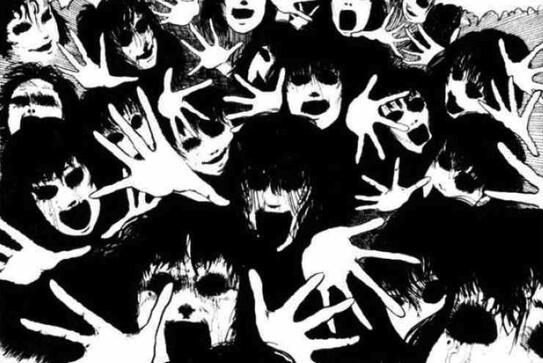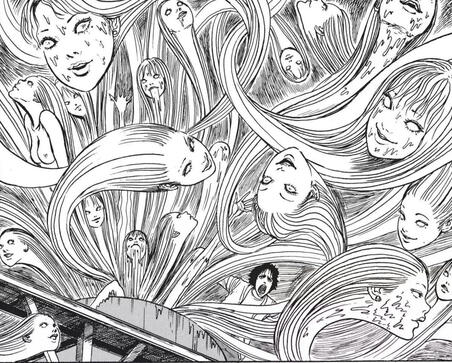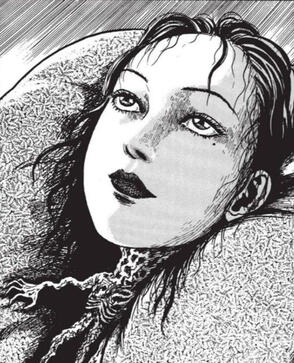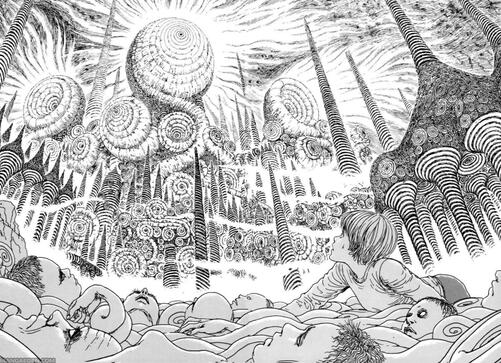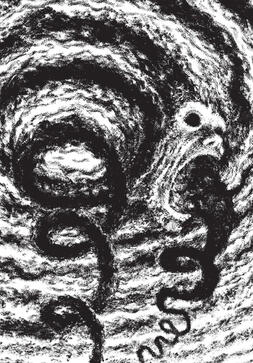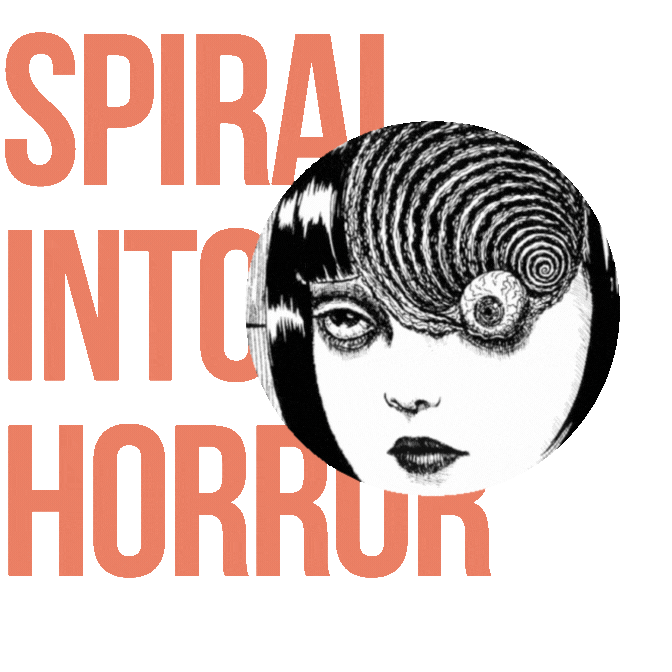
Junji
Ito
by Thao My Tran
most images are expandable!
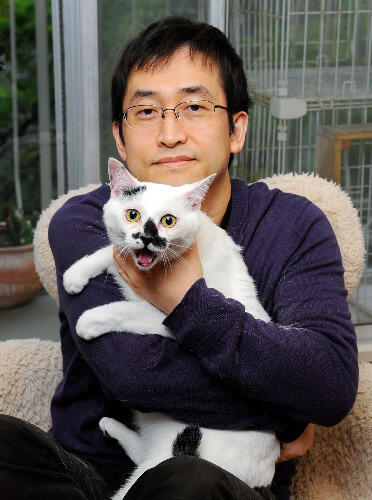
PERSONAL INFORMATION!
Junji Ito, born on July 31, 1963, in Gifu Prefecture, Japan, is a celebrated manga artist and writer renowned for his horror works. As of 2024, he is 60 years old. Ito's unique and unsettling writing and illustration style has made him a significant figure in the horror genre. However, Junji Ito is known for having a surprisingly bright and cheerful personality, in stark contrast to his artistic expressions. He is married to Ayako Ishiguro, also a writer and illustrator, whose support has been instrumental in his career. They live a relatively private life with two cats, Yon and Mu, who have inspired Ito's semi-autobiographical manga, Junji Ito's Cat Diary: Yon & Mu, showcasing his affection for his pets and establishing him as a certified cat lover.
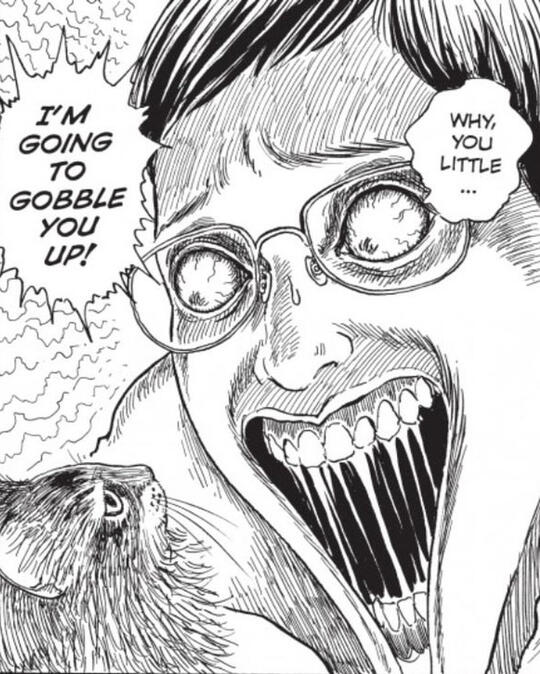
Ito experiencing cuteness aggression with his pet cat, as depicted by Ito himself
UPBRINGING
Ito began drawing manga at the young age of 4, inspired by the horror stories he read, such as the works of Kazuo Umezu and Shinichi Koga, influenced by his older sisters. Despite his early interest in manga, Ito pursued a career as a dental hygienist in 1984. However, he struggled to balance his professional life with his passion for drawing. His turning point came when he entered Tomie, a short story, into a horror manga contest held by Gekkan Halloween, a magazine that specialized in horror manga. Inspired by the tragic death of one of his classmates, Ito wrote Tomie to evoke the strange feeling that Ito had that she would show up again innocently one day. Tomie would go on to win a Kazuo Umezu Prize in 1989 and kickstart the beginning of Ito's success as a horror manga artist.
aa
a
ART STYLE
click on pictures to zoom in
Ito's storytelling is characterized by its ability to evoke intense psychological horror by blending everyday life with nightmarish scenarios. His narrative style often incorporates slow-building tension and unpredictable twists, creating a sense of unease that lingers with readers. To further intensify the sense of horror, Ito employs fine lines and dramatic lighting in his illustrations, often focusing on facial expressions and body horror to leave a lasting impact on viewers. While Ito is primarily known for his black and white illustrations, he occasionally produces works in color that appear in cover art and promotional materials. In these colored pieces, Ito employs colors that range from muted tones to intense contrasting colors to enhance the surreal and unsettling nature of his art, making the grotesque and bizarre elements even more jarring.
CONTEXT
Kazuo Umezu's ability to blend ordinary life with supernatural horror is a technique that Ito has adopted and refined in his own works. In addition to Umezu and the horror films of his youth, H.P. Lovecraft's themes of incomprehensible, otherworldly horrors and the insignificance of humanity in the face of the unknown also resonate in Ito's works, such as Uzumaki, where characters encounter inexplicable and malevolent forces beyond their control. Additionally, Ito often draws inspiration from his own fears; such as with Gyo where he thought that it would be scary if the sharks in the movie Jaws were to grow legs, or with The Enigma of Amigara Vaults, where he thought it would be terrifying if everyone had a hole carved in the precise shape of their body, specially designated for them to fit themselves into. Both of these stories, however, also serve as extended metaphors for Ito's viewpoints on society -- Gyo is an anti-war piece that conveys his condemnation of the Japanese military's conduct, while The Enigma of Amigara Vaults symbolizes the rigid yet all-engulfing structure of Japanese society (both of these are worth a read!). Most of all, though, his stories sprout from his ability to find horror in mundane objects and situations and wish to delve into those simple fears that everyone can relate to.
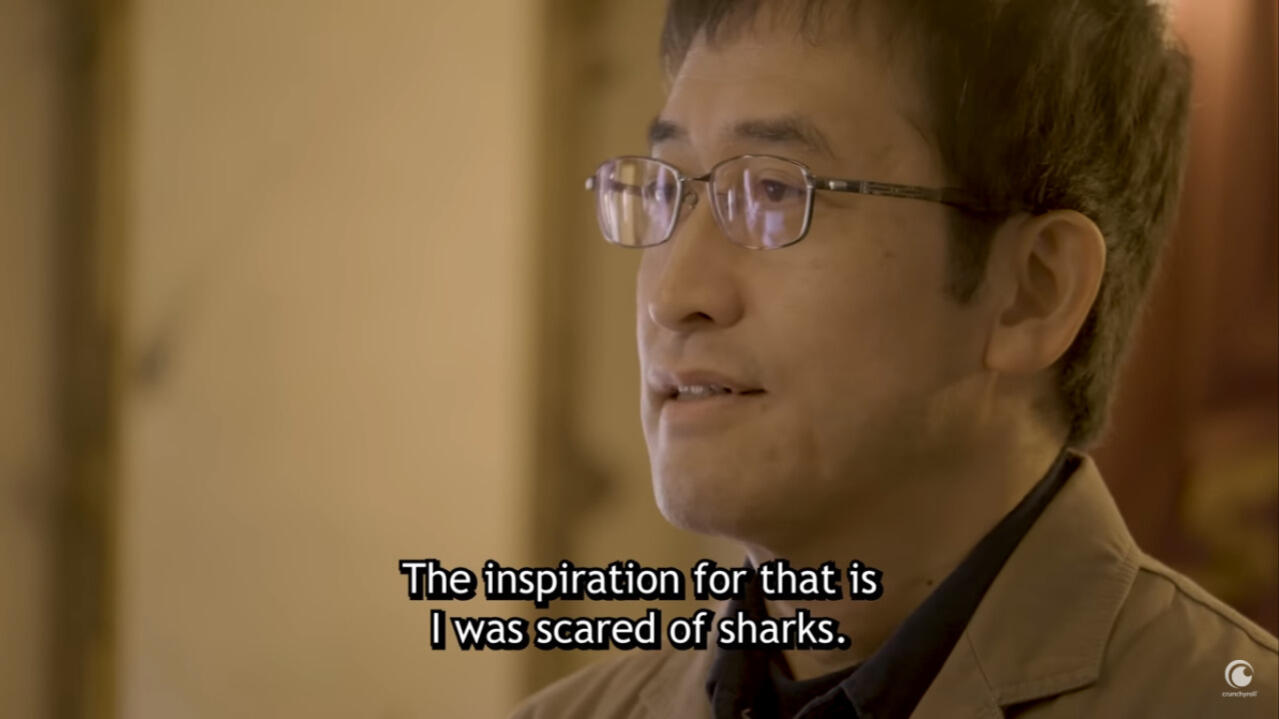
FAMOUS WORK
| Overview | Analysis |
|---|---|
| As.previously.mentioned,.Tomie.is.one.of.Junji. Ito's earliest and most famous works. It started out as a short story that later evolved into a long-running series that spanned over 13 years. The series revolves around Tomie Kawakami, a beautiful girl with an attitude problem and an iconic beauty mark, who drives people, mostly men, to madness and violence towards herself and others. Each short story often ends with Tomie's death, only for her to regenerate and continue her sinister influence. In the initial chapters of Tomie, Ito's art style is relatively simple and less refined compared to his later works, with rougher pen strokes as well as larger inked areas, perhaps as a beginner's attempt to avoid details. Despite this simplicity, Ito's ability to convey horror is still evident. As the series progressed, Ito's art became increasingly sophisticated. His line work grew more intricate, and his use of shading and textures improved, adding depth and realism to the grotesque scenes. Tomie stands as a testament to Junji Ito's evolution as a manga artist and storyteller. The series not only showcases his growing skill in creating visually compelling horror but also serves as a platform for social commentary on violence and human nature. Tomie has since then become an internet icon, with many movie adaptations as well as cosplays replicating the character's off-putting attitude and the iconic beauty mark below her left eye. | The.series.can.be.interpreted.as.commentary.on. the cyclical nature of violence inflicted by men on women, as well as raising the question of what the "perfect victim" is. The men in the story are irresistibly drawn to Tomie and see her not as a person but as an object of their desires, a blank canvas onto which they project their fantasies and frustrations, falling into obsessive love or lust, which invariably turns into murderous rage. This cycle of attraction and violence reflects broader societal patterns where women are often idealized and objectified, only to be punished when they fail to meet men's expectations. Despite being killed multiple times, she always comes back, highlighting the pervasive and cyclical nature of gender-based violence. It is also worth taking into consideration that Tomie herself is both a victim and a perpetrator of violence. On one hand, she is subjected to horrific abuse and dies in inhumane ways; on the other, she harms, manipulates, and provokes those around her to commit monstrous acts. This duality challenges the notion of passive victimhood, or the so-called "perfect victim," and critiques the expectations placed on women to be passive and submissive even in the face of violence. |
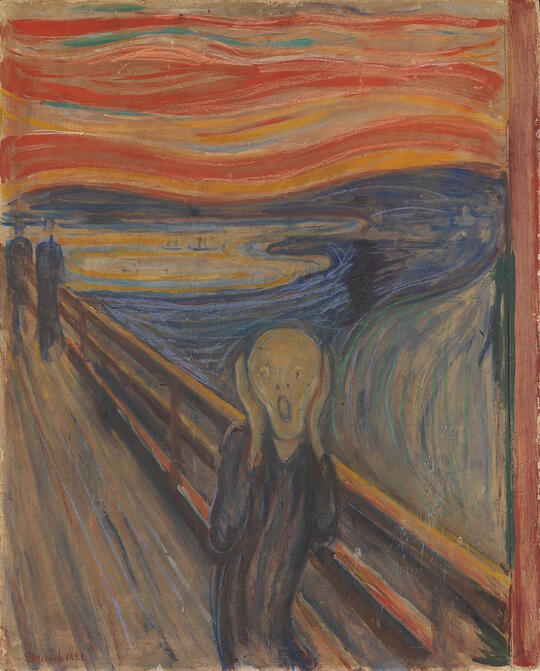
CURRICULAR CONNECTIONS
Uzumaki by Junji Ito can be connected to The Scream by Edvard Munch. The Scream is a painting, part of a series created using various mediums including oil, tempera, and pastel; while Uzumaki is a serialized publication produced with ink on paper. Both works seek to capture human response to an overwhelming situation, however, The Scream is a single, static image, it captures a moment of intense emotion and existential angst, while Uzumaki unfolds over multiple chapters, allowing for the horror and psychological tension to build gradually through the story. Though, they share some similarities. In The Scream, the central figure's anguished expression and the swirling, chaotic background emphasize the painting's emotional intensity. Similarly, Ito's detailed and surreal backgrounds in Uzumaki capture the overwhelming horror and helplessness his characters feel.
